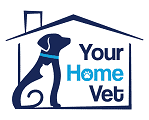When you have chosen your dog, the first 24 hrs are going to be the most important to you both
Put yourself in the dog’s paw prints for a while, he may have been in kennels for a day or several months, he may have been with one of our wonderful foster carers, or he may have been spending time with our behaviorist or trainer. It doesn’t make much difference to the dog where he has been because dogs live for the moment and the day. That’s a tough idea to get your head around because humans spend so much of their lives dwelling on memories and past events or thinking with excitement or fear about the future. Dogs don’t do that!
They have memories, triggered by smells usually, but they have no fear of the future, so when you bring your dog home for the first time, he won’t be worried if you are the right person for him. His interest will be, what are the rules of this place, and who is in control? In the first 24 hours, you will show him those things so he can settle quickly into a routine. Dogs LOVE routine!
Now I’m going to ask you to do something I know will be difficult, don’t feel sorry for him
The best way to get your dog to settle with you is to offer him a calm household that he can feel secure in, by projecting feelings of pity the dog will be confused and unhappy. Try not to be over affectionate in the first few days. I’m not saying “don’t stroke your dog” I am saying be sure your affection is at the right time when he has done something you have asked of him. A simple Sit on command or not jumping on the sofa until you give him the OK, these things mean something to your dog. Smothering your dog with love may make him feel very uncomfortable in this strange and new environment.
If you have another pet to introduce him to make sure everyone is safe. If it’s a cat that the dog has to meet, try and leave it until the next day when the dog has begun to feel more settled. Take the cat into the room first, let her sit on a worktop or a surface that is higher than the dog. If she has a blanket or bed she usually sleeps on, take the sheet to the dog but only allow him to smell the cloth from a distance (remember their noses are super sturdy and he’ll feel the cat hairs from way across the room) only allow the dog to get closer to the blanket on your say so. By treating the cat smell as you would the cat, the dog learns that he must approach the cat calmly. Next, take the dog into the room where the cat is, make sure all windows are closed. Again, let the dog smell, and this time, see the cat from the other side of the room. Don’t allow the dog to approach if the cat is upset and runs across the surface you’ve put her on. If the cat is unconcerned, let the dog come closer to the cat. It’s essential that you stay calm and in control. Even if your dog is known to be used to cats bear in mind, they were the cats that dog possibly lived with all his life. Your cat is quite another matter. If both animals show mild interest at this point, it is probably safe to allow them to meet nose to nose if they want to, but don’t force it. Better to let them settle in together at their pace. If either the dog or the cat becomes excited or defensive, remove the dog from the room and try again later in the day using the same routine. Patience is something that you will need by the bucket load, but the result will be worthwhile.
If it’s another dog, your new dog has to meet, and it’s often more comfortable for them to reach for the first time on neutral territory, perhaps at the kennels. Again calm control of both dogs is essential; if they don’t seem to get on the first time, it may be worth trying still on another day.
All your family members need to meet their new dog, calmly. Explain to your children in a way they can understand that they must give the new dog time and space. Do tell them not to play roughly or play games of tug of war with the new dog. If the dog looks as if all the company stresses him, make sure there is somewhere quiet, you can place him until the excitement dies down. A stressed dog is easy to spot, he may pant or pace up and down, he may whine continuously, his ears will be back, and his tail will be carried low, he may cower or seek out a corner of the room. All of these. Separately or several of them together are warning signs for you, it’s up to you to put him in a place of safety. Patience is going to be needed, but after all, you hopefully have years ahead together. Try not to judge too harshly his reactions in those first 24 hours, walk a mile in his paw prints.
Remember, dogs LOVE routine. Consistent, calm routine, the first 24 hrs will tell your dog everything he needs to know about you, so make sure you start the way you mean to go on by fair handling and a routine that suits you and your family, which now includes an extra member!




11.07
⚽️Seby⚽️
Darius ghigulescu
pitică drq
Benjamin Eduard
•adalia•